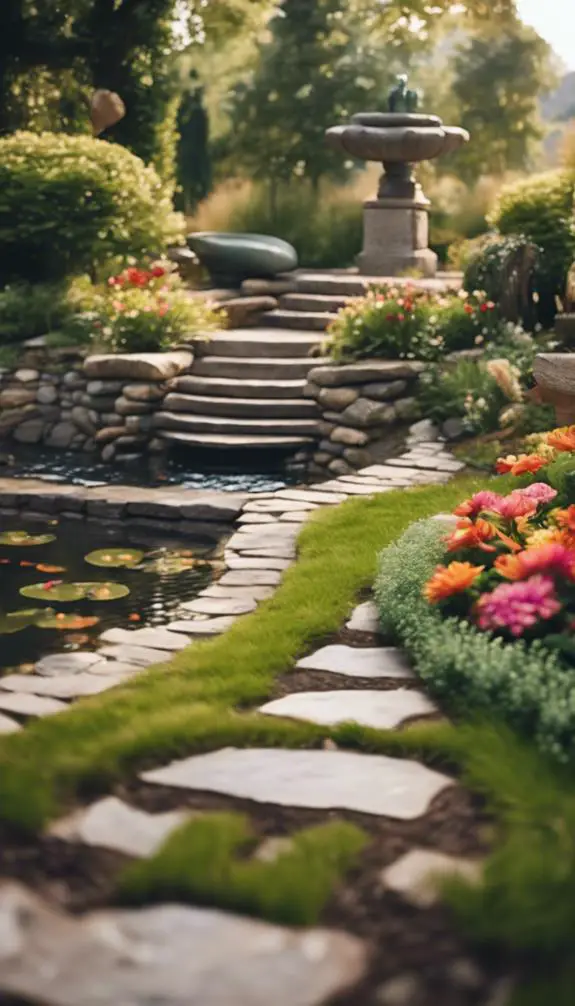As you step onto your front porch, you're greeted by a warm atmosphere, but perhaps not enough sunlight. Don't let that stop you from creating a beautiful outdoor space! You can still achieve a lush and inviting ambiance with low-light plants that thrive in shaded conditions. From elegant Prayer Plants to air-purifying Peace Lilies, there are plenty of options to choose from. But, which ones will work best for your specific porch conditions?
Summary
- Chinese Evergreen, Pothos, and Peace Lily are popular low-light plants that can thrive on a front porch with minimal sunlight.
- Ferns, astilbe, and coleus are suitable for north-facing porches, which receive indirect sunlight, and can add elegance to shaded areas.
- Prayer Plant and Wandering Jew are exotic options that can tolerate low light and bring a touch of elegance to shaded areas.
- Begonias have adapted to survive in shade, developing unique leaf structures that maximize light absorption, making them ideal for low-light porches.
- Peace Lilies can eliminate up to 73% of airborne toxins, providing significant health advantages, and require filtered light to avoid scorching the leaves.
Best Low-Light Plants for Shade
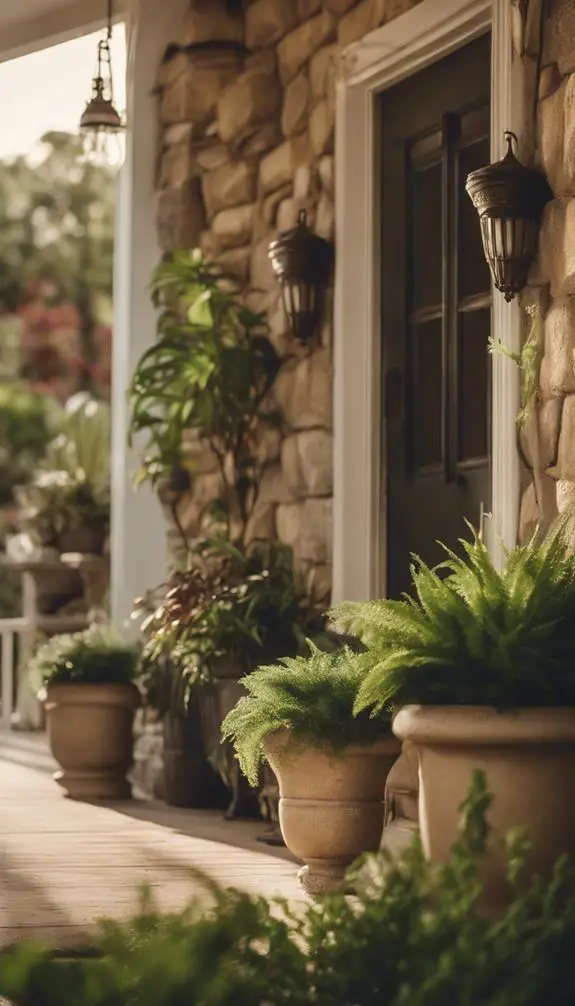
When designing a shaded area, you'll want to choose plants that thrive in low-light conditions.
Shade tolerant plants are perfect for low light gardens, as they can survive with minimal sunlight. Some popular options include Chinese Evergreen, Pothos, and Peace Lily. These plants aren't only low-maintenance but also effective air purifiers, making them ideal for indoor spaces.
If you're looking for something more exotic, consider the Prayer Plant or the Wandering Jew. Both of these plants can tolerate low light and add a touch of elegance to your shaded area.
Ferns for Front Porch Decor
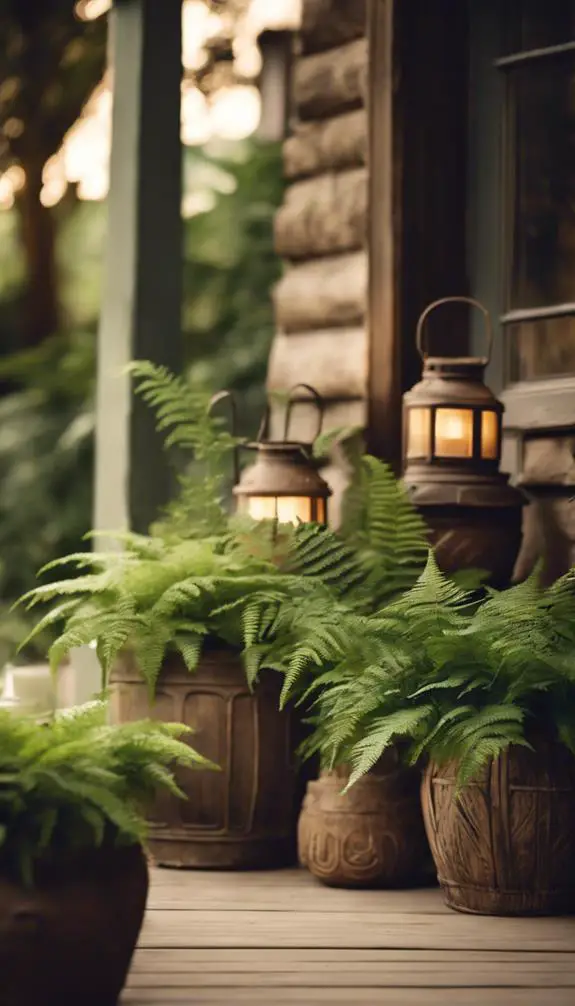
When selecting ferns for your front porch decor, you'll want to ponder the types of ferns that thrive in low-light conditions, such as autumn ferns, ostrich ferns, and rabbit's foot ferns.
Each of these varieties has its own unique characteristics, growth habits, and requirements, so verifying their needs is crucial to guarantee they flourish.
Types of Ferns
You're likely familiar with the lush, green foliage of ferns, which can instantly elevate your front porch decor.
With over 10,000 known fern species, you have a wide range of options to choose from. Ferns have a rich history, dating back to the Devonian period, around 416 million years ago.
They were a dominant plant species during the Carboniferous period, and their fossils can be found in coal deposits.
Some popular fern species for your front porch include the autumn fern, maidenhair fern, and rabbit's foot fern.
Each species has its unique characteristics, such as frond shape, size, and growth habits.
Fern Care Tips
Selecting the right fern species for your front porch is only half the battle; to guarantee your ferns thrive, you'll need to provide them with proper care.
Ferns require high humidity, so you'll need to mist them regularly or place them on a tray filled with water and pebbles. You'll also need to maintain a consistent watering schedule, ensuring the soil is consistently moist but not waterlogged.
Fern pruning is essential to promote healthy growth and prevent overcrowding. Remove dead or damaged fronds, and trim back overgrown areas to encourage new growth.
Additionally, consider fern repotting every 1-2 years to refresh the soil and provide a larger pot if necessary. By following these care tips, you'll be able to enjoy your lush, thriving ferns on your front porch.
Peace Lilies for Shaded Areas
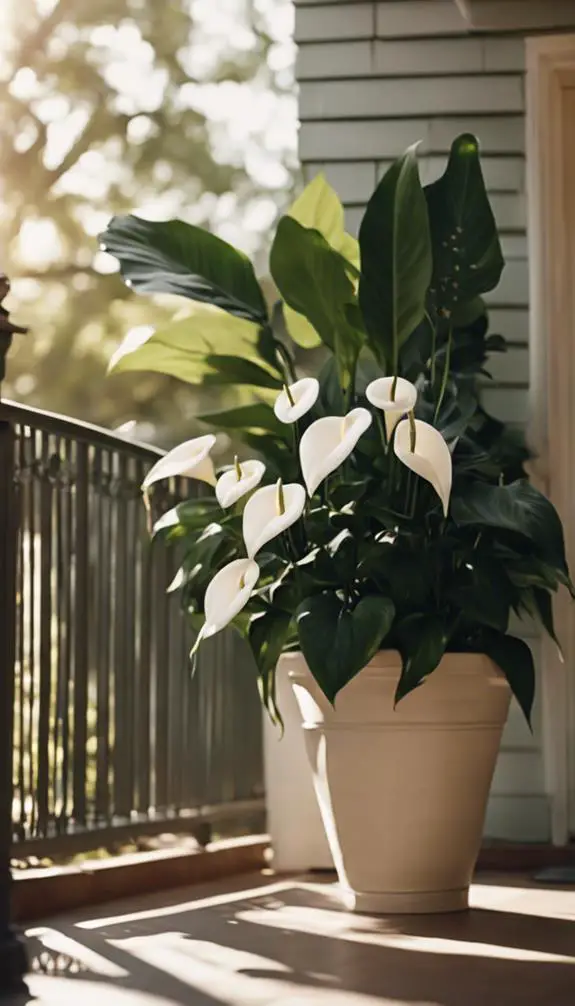
You'll find peace lilies thrive in shaded areas with low to moderate indirect light, making them ideal for rooms with north-facing windows or basements.
They can tolerate a range of shade conditions, from partial shade to full shade, but will produce more blooms in brighter, indirect light.
Ideal Shade Conditions
In shaded areas, peace lilies thrive under specific conditions that cater to their unique needs.
You'll want to provide them with a spot that receives filtered light, where the sun's rays are diffused through a canopy or a sheer curtain. This light filtering reduces the shade intensity, allowing your peace lily to absorb the perfect amount of light.
Avoid direct sunlight, as it can scorch the leaves. Instead, aim for a spot with dappled shade or morning sun followed by afternoon shade.
Air Purifying Benefits
By virtue of their remarkable ability to remove toxins and pollutants from the air, peace lilies have earned a reputation as one of the most effective air-purifying plants for shaded areas.
You'll reap the clean air benefits of having peace lilies on your front porch, as they're proven to eliminate up to 73% of airborne toxins. This results in significant health advantages, including reduced respiratory issues and improved overall well-being.
Peace lilies' air-purifying prowess is thanks to their ability to absorb pollutants like benzene, acetone, and ethyl acetate, making them an ideal choice for areas with limited natural light.
Chinese Evergreen Plant Care
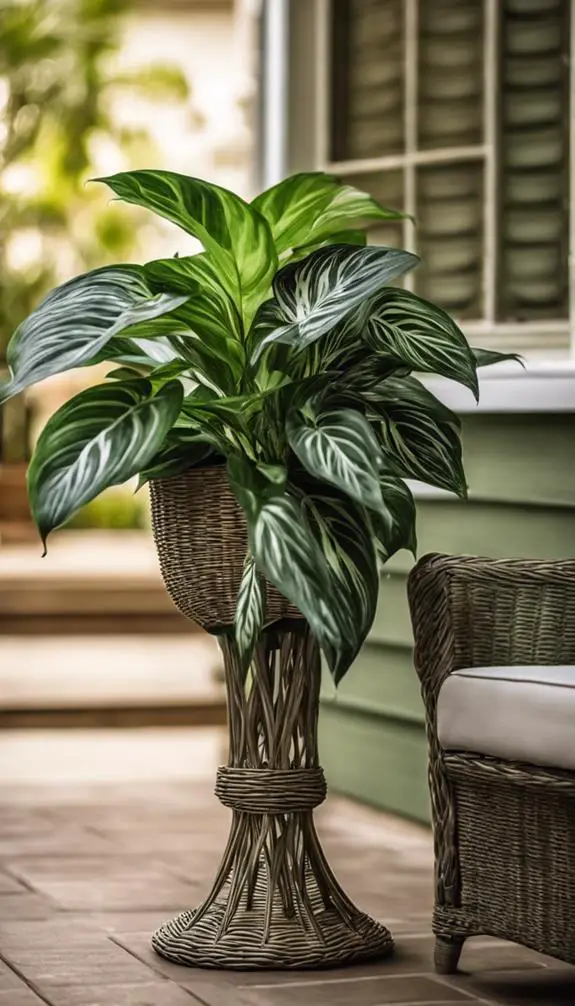
With its attractive, variegated leaves, the Chinese Evergreen has become a popular choice for low-light spaces, but it requires specific care to thrive.
You'll need to choose a well-draining potting mix that's designed for indoor plants, as Chinese Evergreen is prone to root rot in waterlogged soil.
Soil requirements include a pH between 6.0 and 7.0, and moderate fertilization during the growing season.
Leaf variegation, which can range from silver to gold, depends on factors like light exposure and nutrient availability.
To encourage vibrant patterns, provide your Chinese Evergreen with bright, indirect light and maintain consistent moisture levels.
Low-Maintenance Pothos Plants
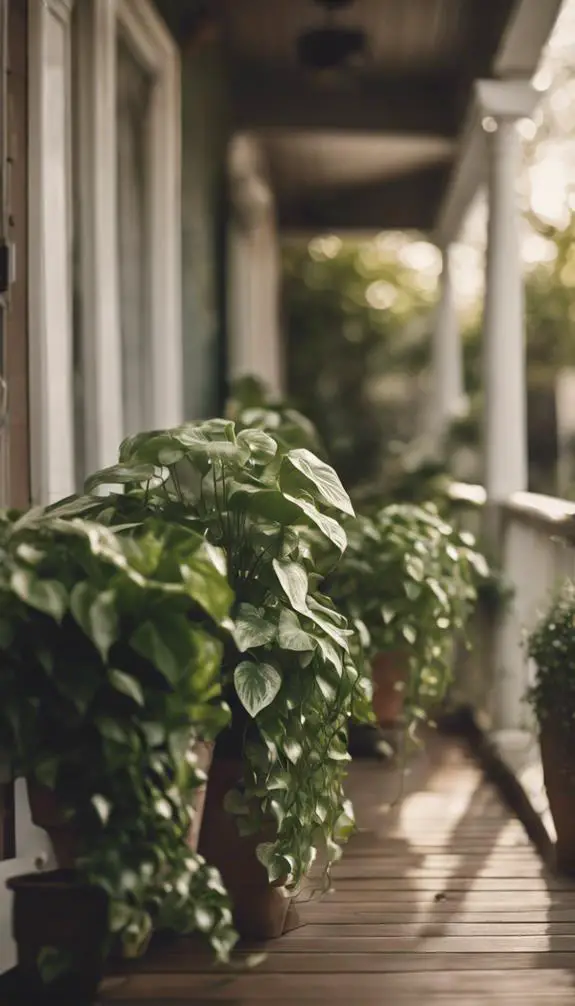
You'll find that pothos plants are an excellent choice for low-light spaces because they're incredibly easy to care for and can thrive in shaded conditions.
As a low-maintenance option, pothos plants require minimal pruning and can survive with infrequent watering, making them perfect for busy individuals or those new to plant care.
Easy Care Options
Pothos plants, renowned for their adaptability, thrive in low-light conditions, making them an ideal choice for indoor spaces with limited natural light.
You'll appreciate their easy maintenance, as they require infrequent watering and can survive with neglect.
For front porch decor, train them to climb up trellises or hang them in baskets to create a lush, verdant display.
To keep your pothos looking its best, prune long vines and remove dead leaves.
This encourages new growth and prevents the spread of disease.
With minimal care, pothos plants will flourish, adding a touch of greenery to your front porch without demanding too much of your time.
Growing in Shade
Growing in shade is where pothos plants truly excel, and their ability to thrive in low-light conditions makes them a perfect fit for areas receiving limited direct sunlight.
You'll find that pothos plants possess exceptional shade tolerance, allowing them to flourish in environments with as little as 50-75 foot-candles of light.
This versatility makes them ideal for front porches with partial shade or those receiving filtered light through a tree canopy or awning.
When considering pothos plants for your shaded area, keep in mind their ability to adapt to light filtering through sheer curtains or blinds, making them a great option for indoor-outdoor spaces.
Suitable Plants for North-Facing Porches

North-facing porches receive indirect sunlight, making them ideal for plants that thrive in low-light conditions.
When selecting plants for your north-facing porch, consider the porch orientation and the amount of indirect sunlight it receives. You'll want plants that can tolerate low light and potentially cooler temperatures.
For a dynamic look, incorporate seasonal plant swaps to keep your porch fresh and interesting.
During the spring and summer, try using ferns, astilbe, or coleus, which thrive in low-light conditions.
In the fall and winter, swap in plants like cyclamen, kale, or ornamental cabbage, which add color and texture to your porch.
Beautiful Begonias for Shade
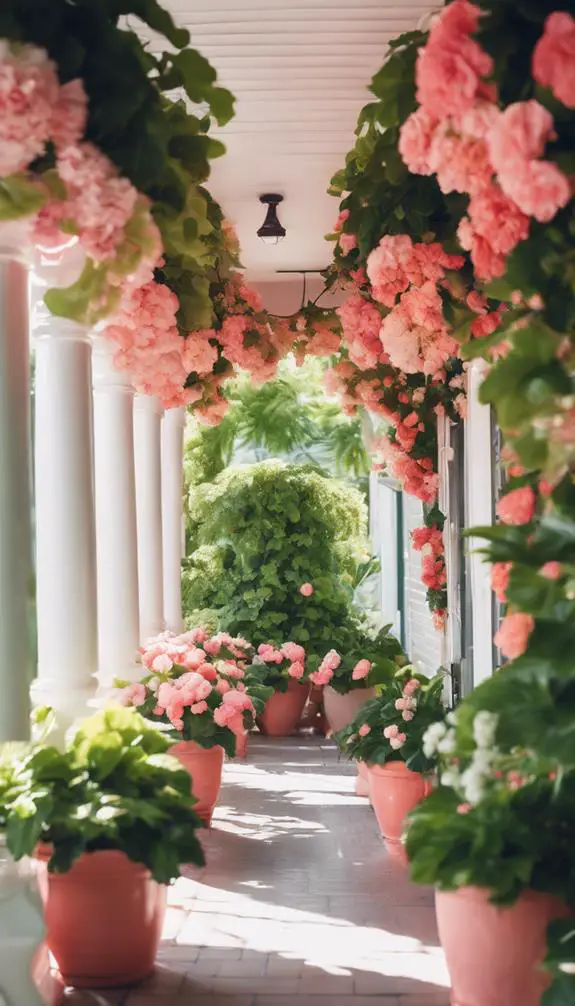
When selecting plants for your shaded porch, you may find that begonias are an excellent choice due to their ability to thrive in low-light conditions.
With over 1,800 Begonia species and numerous hybrids, you'll find one that suits your front porch's unique conditions. Begonias have adapted to survive in shade, developing unique leaf structures that maximize light absorption.
They come in a range of shapes, sizes, and colors, from the compact Begonia x hybrida to the trailing Begonia semperflorens. Some Begonia hybrids, like Begonia x corallina, boast vibrant flowers that add a pop of color to your porch.
Adding Color With Coleus Plants
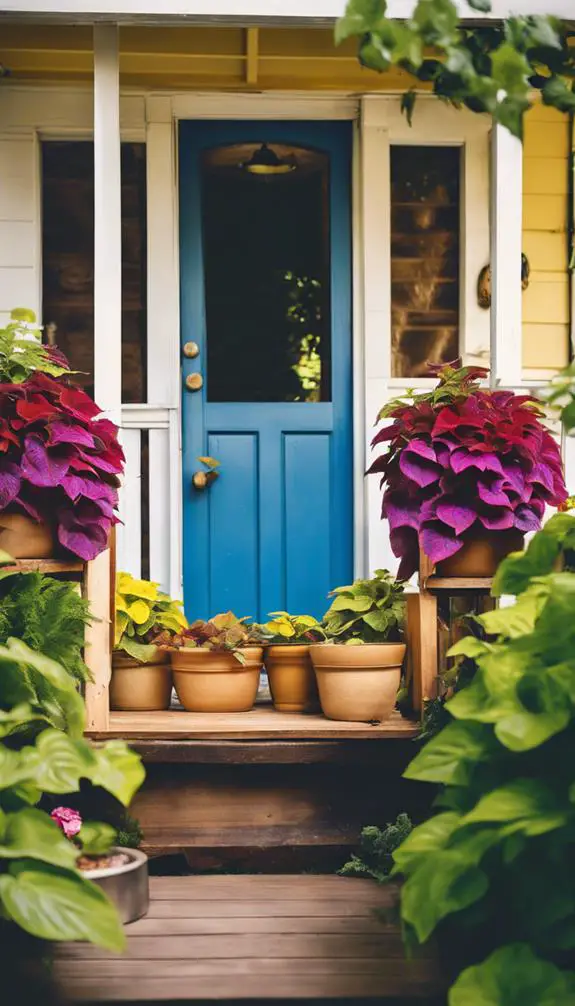
Since you're looking to inject vibrant hues into your shaded porch, consider coleus plants, which offer an unparalleled palette of colors to brighten up the area.
With over 150 Coleus Varieties to choose from, you can select the perfect shade to match your porch's aesthetic.
These plants thrive in partial shade, making them an ideal choice for low-light porches.
During the Summer Blooms, coleus plants produce delicate, tubular flowers in shades of blue, pink, and white, adding an extra layer of visual interest.
Their leaves, which come in a range of patterns and colors, are the true showstoppers.
From bold and bright to subtle and muted, coleus plants are sure to add a pop of color to your shaded porch.
Dracaena Plants for Dark Spaces
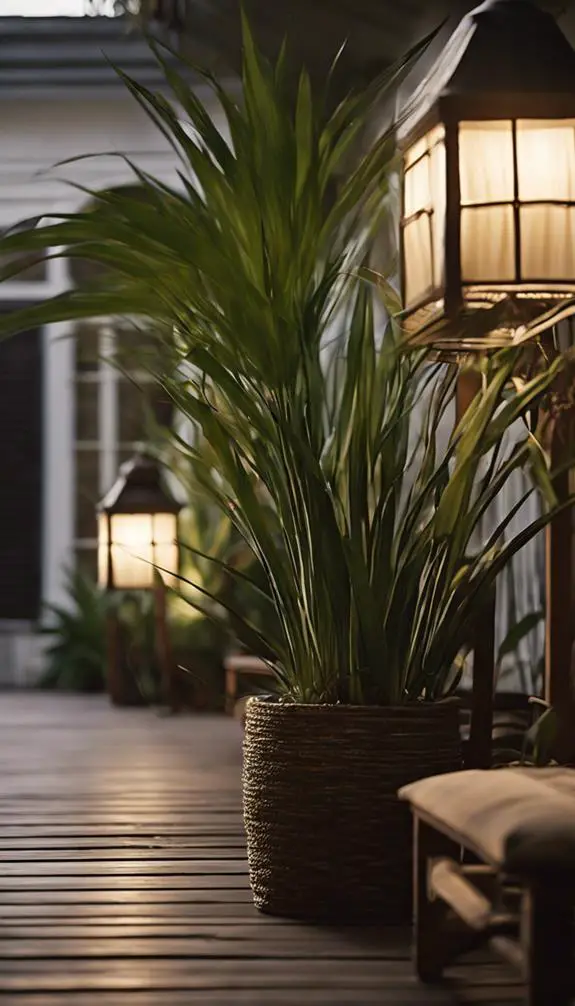
While coleus plants can add a splash of color to your shaded porch, they may not thrive in extremely dark spaces.
For areas with minimal natural light, you'll want to ponder Dracaena plants, which are tolerant of low light conditions. With over 40 Dracaena varieties to choose from, you're sure to find one that suits your porch's aesthetic.
These plants are also low-maintenance and can survive with infrequent watering. Dracaena propagation is relatively easy, too, as they can be grown from stem cuttings or leafy tops.
Simply plant the cutting in well-draining soil, and keep it moist until roots develop. With proper care, your Dracaena plant will thrive, even in the darkest corners of your porch.
Prayer Plants for Low-Light Conditions
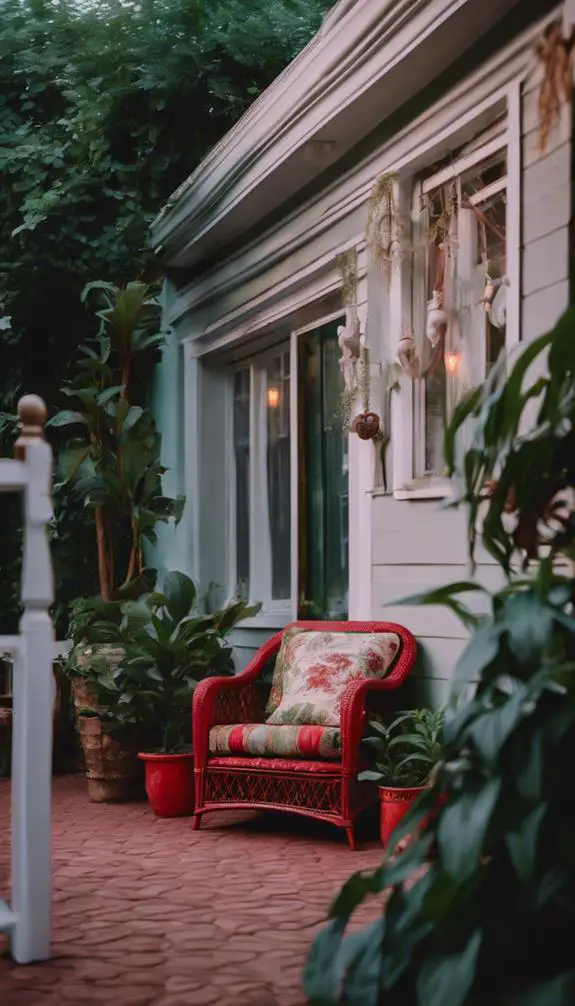
How do you bring vibrancy to a dimly lit room without relying on artificial lighting?
One solution is to incorporate prayer plants into your space. These plants thrive in low-light conditions, making them ideal for front porches with limited natural light.
With over 50 prayer plant varieties to choose from, you can select one that suits your style and preferences.
Prayer plant propagation is also relatively easy, allowing you to share plants with friends or expand your collection.
Simply divide the roots, pot the new sections, and keep the soil moist.
With proper care, your prayer plants will flourish, adding a touch of greenery to your dimly lit space.
Calathea Plants for Indoor-Outdoor Spaces
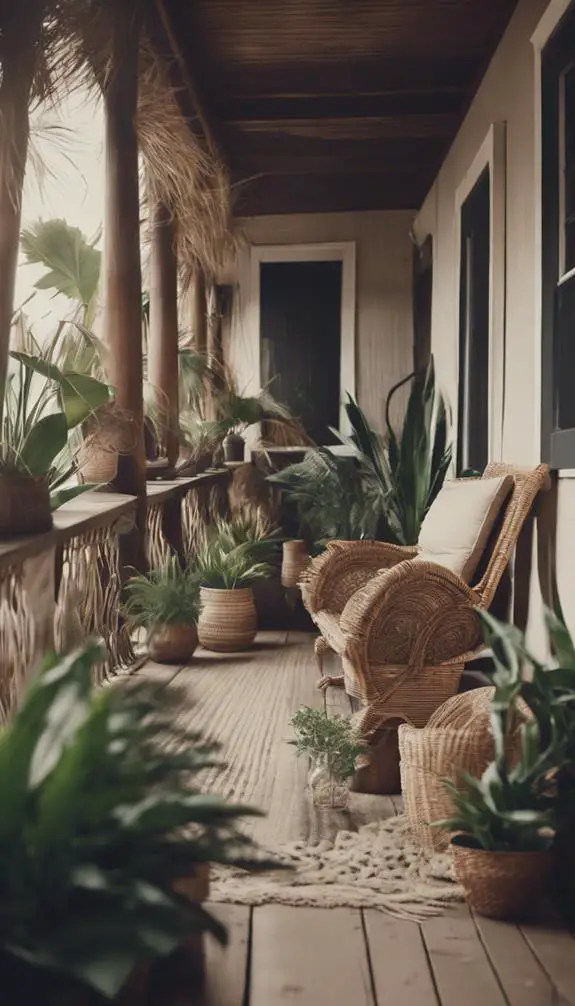
Many Calathea varieties are suitable for indoor-outdoor spaces, where they can thrive in low-light conditions and add a pop of color.
When selecting a Calathea for your front porch, consider the specific lighting conditions and temperature ranges. Calathea orbifolia, for instance, prefers bright indirect light, while Calathea freddy can tolerate low light.
You'll also want to choose a variety that fits your desired aesthetic, as Calathea decor can range from subtle to statement-making.
With proper care, Calathea varieties can bring a touch of tropical elegance to your indoor-outdoor space. By understanding the unique needs of your chosen Calathea, you can enjoy its vibrant colors and unique patterns year-round.
ZZ Plant Care for Busy Homeowners
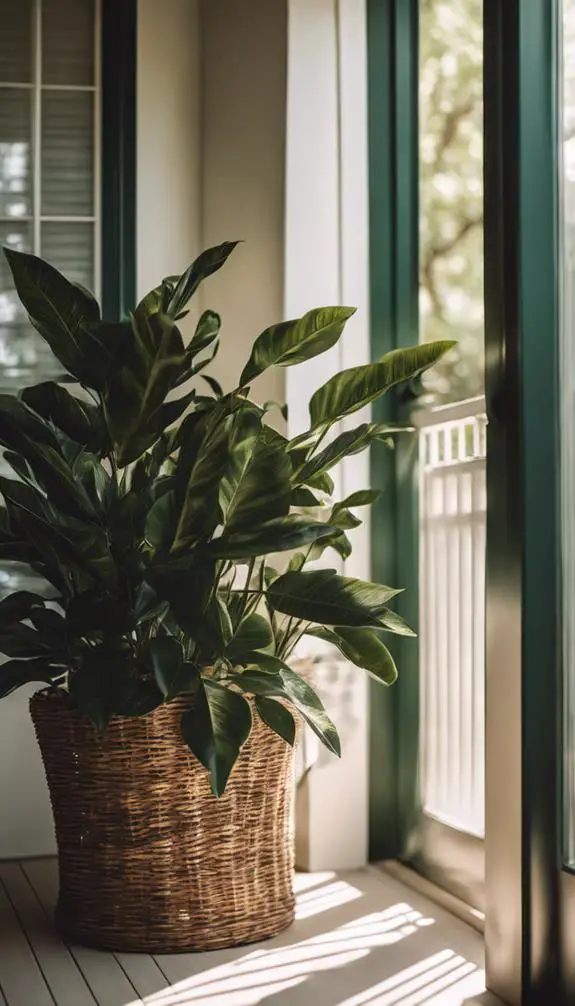
Get ready to bring home a low-maintenance superstar: the ZZ Plant.
You'll love its ability to thrive in low-light conditions, making it perfect for busy homeowners.
Debunking ZZ plant myths, this plant doesn't need frequent watering; in fact, it prefers to dry out slightly between waterings.
When it comes to ZZ plant decor, its sleek, glossy leaves add a touch of modern sophistication to any space.
To keep your ZZ Plant happy, provide it with indirect sunlight, moderate temperatures, and infrequent fertilization.
With these simple care requirements, you can enjoy the beauty and air-purifying benefits of this innovative, low-maintenance plant.
Waxy Leaf Plants for Shaded Porches
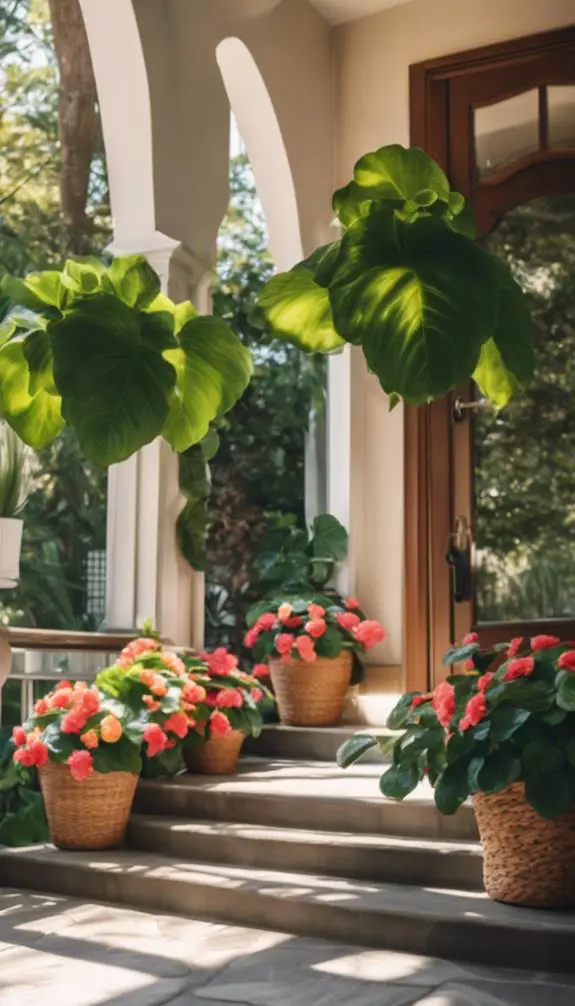
Several waxy leaf plants thrive in shaded porches, where they can add a touch of elegance and vibrancy to an otherwise dull outdoor space.
You'll notice these plants feature waxy foliage, which helps retain moisture and withstand low light conditions. The leaf texture is often thick and fleshy, allowing the plant to conserve water and energy.
Some popular waxy leaf plants for shaded porches include Peperomia, Pothos, and Dracaena. These plants are perfect for adding a touch of greenery to your outdoor space, even in areas with limited sunlight.
FAQs
Can Low-Light Plants Thrive in Complete Darkness?
You'll find that most plants, even those touted as low-light champions, can't survive in complete darkness; they require some dark tolerance, and Artificial lighting can bridge this gap, but it's vital to understand the specific needs of your chosen species to thrive.
How Often Should I Water My Low-Light Plants?
You should establish a water schedule based on moisture levels, checking soil daily; water when it feels dry to the touch, but not soggy, as overwatering can be detrimental, and adjust frequency according to humidity and temperature fluctuations.
Do Low-Light Plants Require Fertilization?
You should fertilize your plants regularly, as they'll benefit from a balanced fertilizer schedule. Soil quality plays a vital role, so choose a well-draining mix and consider a fertilizer specifically formulated for indoor plants in low-light conditions.
Can I Move Low-Light Plants Indoors During Winter?
When winter arrives, you can definitely move your plants indoors for seasonal shift, but guarantee you adjust their winter care accordingly, as indoor conditions often differ from outdoor environments, requiring tailored attention to thrive.
Are Low-Light Plants Pest- and Disease-Prone?
You'll find that plants prone to fungal issues, like overwatered ones, can attract pests, making them more susceptible to disease. As you care for your plants, monitor for signs of infestation and infection, addressing them promptly to prevent the spread.
Conclusion
You've now explored the best low-light plants for your front porch, each with unique benefits and care requirements. From Ferns' delicate fronds to ZZ Plant's low-maintenance demands, you've got a range of options to enhance your shaded outdoor space. By choosing the right plant for your porch's conditions, you'll create a thriving oasis that purifies the air and adds visual appeal. With proper care, your plants will flourish, providing a welcoming atmosphere for years to come.


